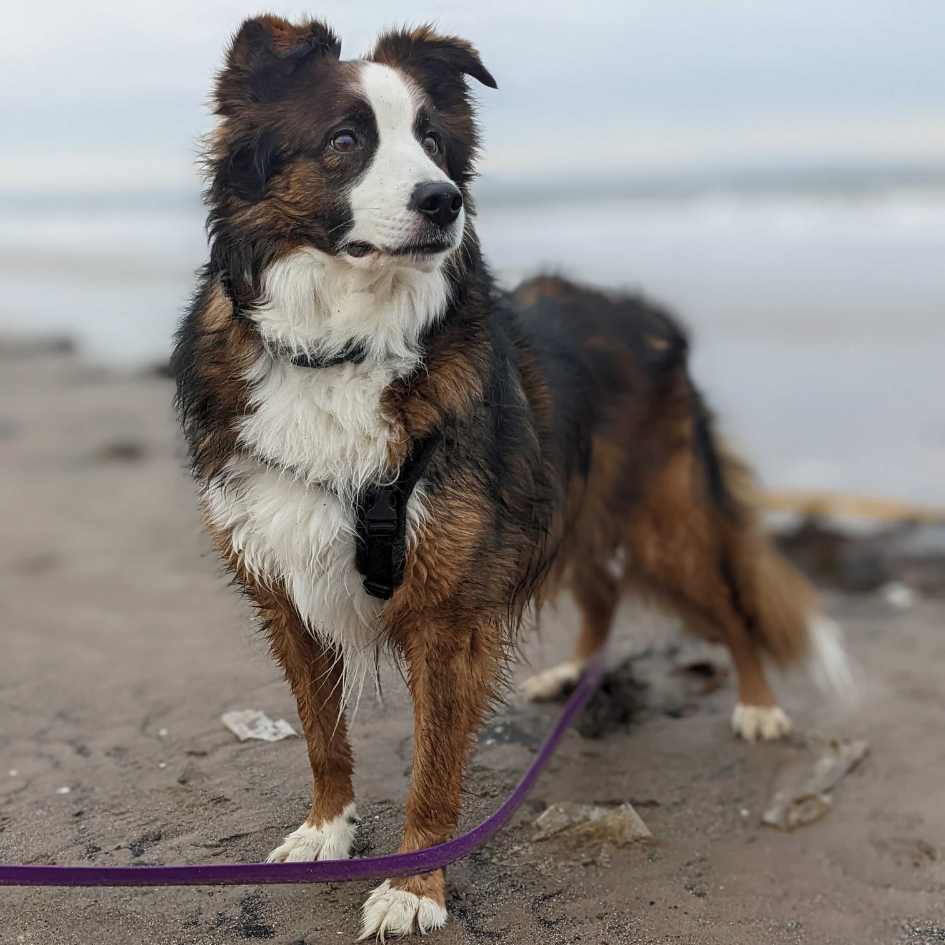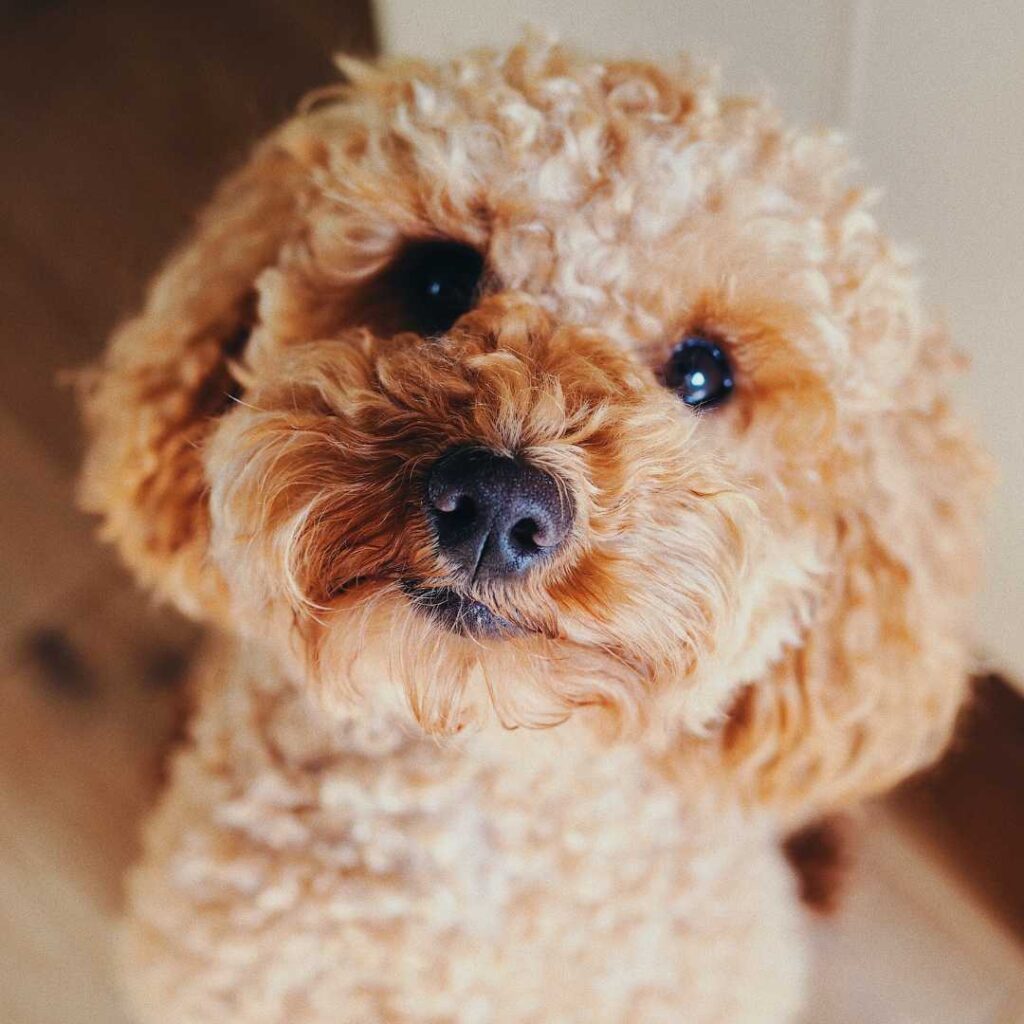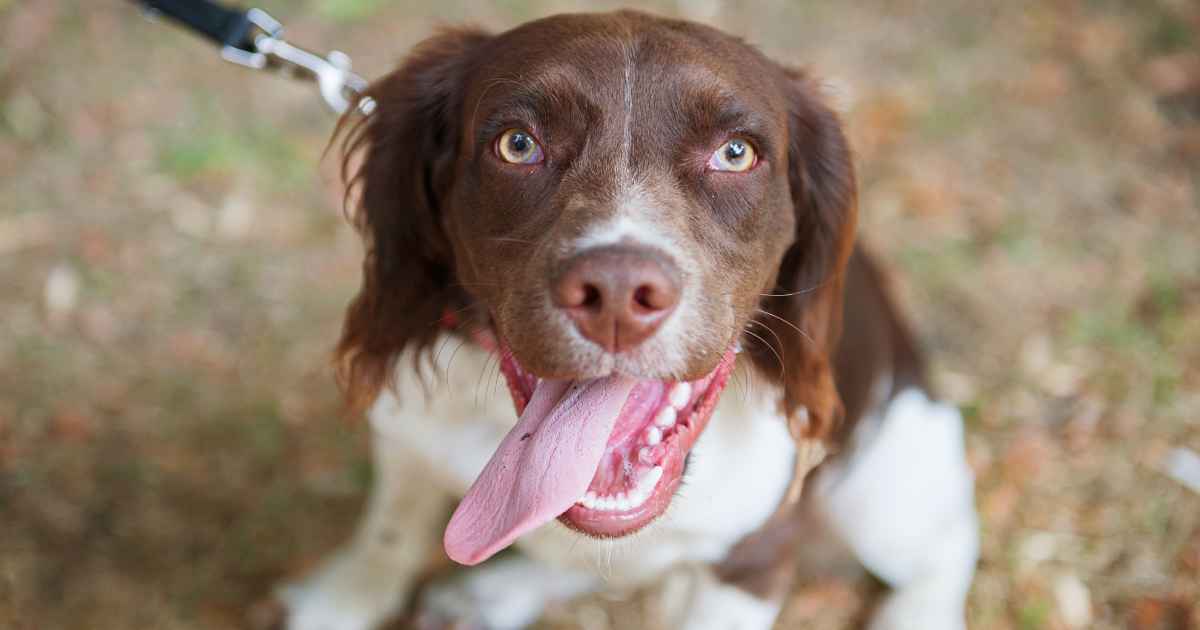Whether they want to go out to the loo, are desperate to play or they’re counting down to dinnertime – our pups lock eyes with us a lot. And a question I’ve heard from several people recently is “why does my dog stare at me?”. Like more things in canine behaviour, the answer is “it depends”!
Context is key
Dog behaviour is largely contextual – so it’s not enough to ask “why does my dog stare?” without sharing what circumstances your dog stares in.
What we do know is staring in dogs is very natural canine behaviour, as it’s part of their predatory sequence. This is the chain of behaviours all predators use to hunt, catch and eat their food. While domestic dogs are largely opportunistic scavengers and omnivores, their ancestors would most certainly have hunted for their meals.
The predatory sequence in dogs is:
- Eye – locate and watch the thing
- Stalk – creep up on it so you can get as close as possible before it knows you’re there
- Chase – run after it
- Grab by biting – get hold of it to stop it
- Final bite
- Time to eat
The very first bit of that predatory sequence is “Eye”. For a hunter, this takes focus and concentration. You need to assess your prey, decide if it’s something you can catch, if hunting it is going to be safe, what it’s doing… And even as you creep up on it, you have to concentrate on its movements, if it’s spotted you, and if it’s going to run.
In other words, you stare at it! This is totally natural behaviour from an animal who has descended from predatory ancestors.
Does my dog’s breed group make a difference?
The interesting thing about the predatory sequence, however, is once dogs started living alongside humans, we discovered there were jobs certain dogs were really good at. To develop this, we intentionally bred dogs who were good at some parts of this sequence and weaker at others. This created our wide range of working breeds.
For example, the Retriever breeds, like Labradors, were created by breeding dogs who were good at the first part of the predatory sequence, but not so good at the last bit! So they’d Eye, Stalk, Chase, Grab…. But then have a poorly developed/non-existent Final Bite. This means they’d see it/stare at it, creep up on it (although this wasn’t always necessary), chase it, and get hold of it. But then as they didn’t have the next bit in their behaviour repertoire, they’d just carry it around! And because they were bred from dogs who generally were strongly bonded to their humans, they could be fairly easily trained to give their prize to their person. It’s also why they are generally soft-mouthed.
Some breeds were bred in a way that part of the predatory sequence was enhanced. Working Collies are a prime example. They use the first part of the predatory sequence to herd livestock, usually sheep. Eye, Stalk, Chase – generally without the next bit. The problem is sheep quite often don’t want to be moved. They’re quite happy where they are, thank you very much! For a lone dog to convince a flock of these woolly grass cutters to move, takes some strength and determination – and the best way to do this, is to establish their Sheepdog credentials and get some instant respect with some strong eye contact.
So Collies don’t so much have an ‘Eye, Stalk, Chase’ sequence as they have an ‘EYE, Stalk, Chase’ sequence. Just watch a working Border Collie either work sheep or play with a toy. They take staring to a whole new level! This is still often seen in companion or show Collies and Collie/livestock herding crosses.

What if my dog isn’t a working dog?
While most of our dogs don’t work at their original jobs, their predatory behaviour patterns continue. As owners, we see this mostly in play and games.
Terriers play different games to retrievers, who play different games to hounds, and so on. Play is about practising, or more likely have the chance to enjoy, the predatory behaviours they’ve inherited.
That’s the thing about the predatory sequence. It’s internally rewarding for a dog. Every time they do it, they get that buzz of feel-good neurotransmitters that keep them coming back for more. Similar to how you feel when you eat some chocolate!
Nature is incredibly clever – and knows most of the time, an animal will fail when out hunting their dinner – especially when they’re young and inexperienced. If this behaviour needed an external reward (a treat, a good meal) in order to continue and persist, the animal wouldn’t survive, as after a few failures, they’d just give up as that ‘wasn’t working’.
So just doing the predatory sequence (or the bit they’ve inherited) is internally self-rewarding. This is the key to understanding your dog and living in harmony with them.
Your dog doesn’t just like doing that behaviour, they need to do it in order to be happy, healthy and fulfilled. Many perceived behaviour problems come from owners not giving their dog an outlet for these natural behaviours with toys, games and enrichment.
Every single breed, no matter which bits of the predatory sequence lurk in their canine brain, start with “Eye”. So they stare to a greater or less degree when they’re playing, as preparation for chasing, at times of excitement – and some breeds or types do it far more intensely then other.

Other reasons your dog stares at you
There is of course also fearful staring. The first thing to decide before you hunt, chase or run away is ‘is this safe?’. In the same way if you have a spider phobia, you can’t take your eyes off the arachnid in the corner of the room. Your primary directive, above all else, is to be safe – live to stare another day!
Of course, the more you stare, the more your excitement/fear increases because SPIDER! It’s the same with dogs – and why if you have a reactive or fearful dog, breaking the eye contact (or far better, not putting them in the situation where they get into that stare/excitement cycle) can be really useful.
So why do dogs stare? Simple – it’s because they’re dogs!

